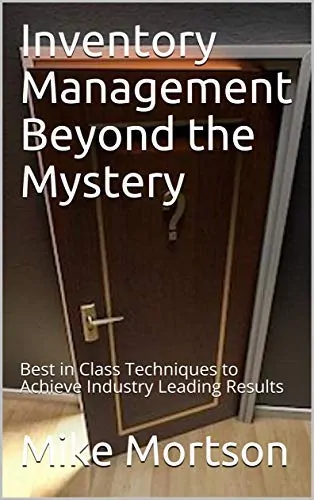Have you experienced part shortages that gate your production schedule?
Part shortages can be highly frustrating issues to deal with. They almost always happen within the standard lead time of the components you need. And very often they can stop production immediately.
Everyone wants the shortage resolved immediately. From your Customer to your CEO through to the entire Management chain and everyone in Production … they all want the needed parts NOW!
But there are many reasons why part shortages occur. And there are many actions that can be taken to mitigate their occurrence. You don’t have to live with shortages every day if you have a Supply Line strategy.
I have seen many different approaches to deal with, or not deal with, part shortages. But it is important to recognize that part shortages are the symptom of a larger problem. It could be bad forecasting, poor order management tracking, failure to deal with supplier issues, inaccurate parameters, or lack of supply chain visibility.

Whatever the cause it is those reasons which must be addressed in order to either effectively prevent part shortages or to resolve them quickly and expeditiously. Living with shortages is not the answer. You need a conscious Supply Line strategy.
Company 1
The occurrence of part shortages was an hourly event. With dozens of facilities, dozens of customers, thousands of bills of material and tens of thousands of parts we had an environment which was prone to having part shortages.
Shortages were so prevalent that we had people dedicated full-time, all around the world, to the job of resolving part shortages. There was an official Corporate department called Supply Line Management. Unique business processes, escalation protocol, supplier contacts, and timelines had been put in place to deal with the ongoing and never-ending shortages.
Even though ensuring continuity of supply was generally a decentralized function invariably there were customer issues which were so hot that I would often get pulled in to lead the resolution of dozens of supply issues. I became the “Chief Shortages Officer”. Seriously!
There were many reasons for the part shortages. First and foremost was the inaccuracy of the forecasted demand that we received from Customers. Invariably they wanted more of some products than they forecasted and they never knew this until the last minute. And this was well within the order lead time of the parts that we needed.
Occasionally there were other issues such as lost parts, late part deliveries, supplier quality issues and cycle counting discrepancies. But the lion’s share of shortages were caused by forecasting inaccuracies.
The actions taken were usually based on adding buffers and contingencies. Customers would want us to store more finished goods, increase safety stocks, and hold extra component inventory. While these steps can help dampen the impact of shortages they don’t deal with the forecasting issue head to head. They all involve adding inventory, and cost, which is highly inefficient and extremely expensive.
I believe that wishing for accurate forecasting is a panacea. Forecasts will almost always be inaccurate. As such you must engineer your Supply Chain strategy to efficiently handle poor forecasts. This means that you must create a “Lead Time Agnostic Supply Chain™“.
A “Lead Time Agnostic Supply Chain™” is one in which it should largely not matter what the component lead time is. You should be able to get the parts you need quickly and seamlessly. There are many techniques that you can use without adding inventory.
For instance you can work with your suppliers to differentiate the order lead time from the replenishment lead time. Your facilities should be driving down the time to move goods from your docks to your production line, through your production line and out the door. Vendor Managed Inventory (VMI) programs can help to ensure goods are held as low in the Supply Chain as possible yet be accessible quickly. And getting rid of unnecessary buffers in your Supply Chain can also reduce the time required to acquire the goods you need.
Company 2
This Supply Chain company also had extensive complexity in its operations. Managing thousands of bills of materials and parts for dozens of Customers all around the world was the basic business model.
However I was extremely surprised after several weeks to notice that there were absolutely NO part shortages at all. This struck me as extremely unusual. It was great not to have the distraction that comes with managing part shortages. But to have zero shortages at all was highly suspicious to me.
The Company’s inventory turns were very low. That was my first clue. I took the time to crawl into the details of the parameters with the Inventory Management team. That’s when I understood what was going on.
Over time the company had built in so many buffers, safety stocks, exaggerated lead times and contingencies that they literally had at least one years supply of most components for which the real lead time was as low as 2-4 weeks. Astonishing!
That’s why they had no part shortages. They had issues in the past and their decision (to say it was a strategy would be inaccurate) was to just add buffers in the inventory to eliminate any possibility of having shortages at all. The result was that they had a phenomenal amount of cash tied up in Inventory, their turns were uncompetitive, they had huge write-offs (and profit impacts) for obsolete inventory, and there was no focus on proper forecasting and planning. Ugh!
Needless to say we launched a concerted focus on streamlining all of the parameters, introducing a new SIOP process and increasing operational efficiencies. The result was a 50% reduction in inventory (and doubling inventory turnover) while reducing the obsolete inventory write-off exposure, reducing inventory reserves, improving on time delivery, and generating very few part shortages.
Conclusion
Components and raw materials of all kinds are needed in the production of your products. Managing part shortages is rarely a fun activity. There are certainly people who manage shortages extremely well. But they are usually firefighting in very stressful situations.
Proper Supply Chain management requires a very deliberate and conscious strategy for your Supply Line. There are a variety of techniques which you can use to create a “Lead Time Agnostic Supply Chain“, one in which shortages are minimized and their impact mitigated due to the great engineering of your well functioning Supply Chain.
Recognize that part shortages are a symptom of problems elsewhere in your Supply Chain design. And define your Supply Line Strategy now!


 EBOOK HERE
EBOOK HERE